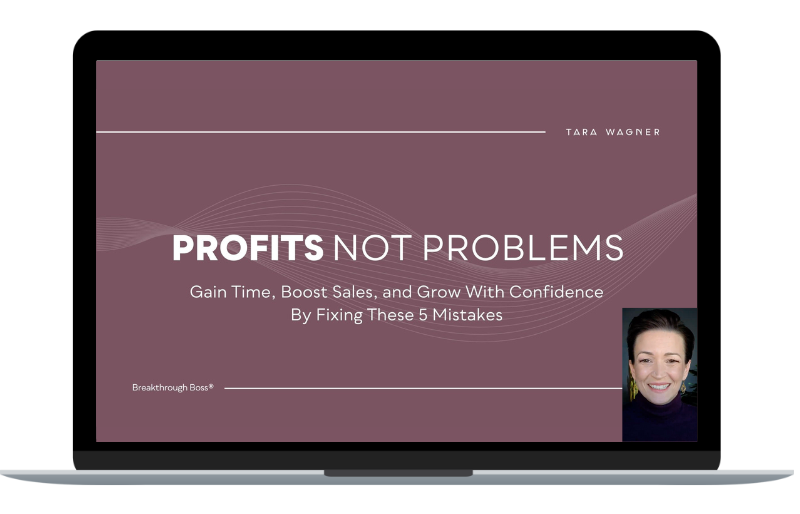Everybody wants to make starting a business sound easy—just throw up a website, start an IG account, and the clients will come flocking in. But behind those simple steps are dozens of decisions you need to figure out first.
Take it from me—an Accredited Small Business Consultant with 25 years of experience and 7 years coaching entrepreneurs—here are 10 things I beg you to do before you start your business. (And read to the end—I’ll show you how to avoid the biggest beginner mistakes, too.)
1. Do Real Market Research
Before anything else, you need to find out if your business idea is even viable.
Who else is doing what you want to do?
What are your ideal clients saying is missing?
What do they want? How do they want it? And where are they looking for it?
Great market research makes 90% of your decisions for you. It tells you where to market, how to market, what to offer, your price points, branding decisions—everything.
Your business decisions should be made by the people paying you, not based on assumptions or your own opinions.
In my program Breakthrough Boss, I teach how to get people on research calls, what questions to ask, and how to turn their answers into powerful messaging using their exact words.
Important: Market research is not surveys, polls, or journaling. It’s about real conversations with real people.
2. Clearly Define Your Ideal Client (in 2 Ways)
Once you’ve done market research, use the answers to define your ICA (Ideal Client Avatar) in two ways:
A) Demographics
Things like age, gender, location—useful for some businesses (like menopause coaching), but not always critical.
B) Psychographics
This is where the gold is: What are their goals? Struggles? What have they tried and hated? What are their values and personality traits?
You don’t need every client to match 100%, but you do want patterns that help you speak directly to the people you want to serve. Especially their words. For example:
A personal trainer says, “Structured strength and nutrition program.”
The client wants to hear, “Lose weight without going to the gym.”
Use their language, not yours. When you do, you’ll hear things like:
“OMG, it’s like you read my mind.”
If you’re not hearing that, you likely don’t know your audience well enough yet.
3. Define Your Brand (It’s Not Just Colors)
Your brand is not your logo or color palette. It’s the mark you leave on people—the way your business makes them feel.
Think about:
Your personality: Are you fun, serious, nurturing, direct?
The experience: What should your clients expect when they interact with you?
A great example is my client Erica, who runs a yoga studio focused on beginners. Her brand is fun, welcoming, and community-focused, and that shows up in everything from her website to her social posts.
Your branding should set expectations and reflect your personality and values—not just what looks cute. Design for impact, not preference.
4. Create a Product Pathway
Think of your offers like a driveway, not a craft fair.
Instead of a bunch of disconnected products, create a path that takes someone from curious → first purchase → next step → next level.
For example, my Breakthrough Boss® program helps you plan, build, and scale your business. Once you’re scaling, you might need more support—so the next step could be my Inner Circle for 1:1 consulting.
If you’re product-based, think in collections or complementary items to increase AOV (Average Order Value) and LTV (Lifetime Value). And remember: start with what’s closest to cash—launch that first.
5. Get Pricing Right (Don’t Guess)
Pricing isn’t about picking a number that “feels right” or “charging what you’re worth.” It’s about:
Understanding your ideal client’s perceived value
Knowing your industry standards
Accounting for profit margins
One huge mistake: setting prices based on what you would pay. Often, what comes easy to you feels less valuable—when it’s exactly what someone else needs.
Pro Tip: If you undercharge, you might actually sell less. Low prices can lower perceived value.
Use this basic formula to find your ideal pricing:
Total monthly expenses + profit goal = total revenue goal
Divide revenue goal by hours available to work
Factor in all hidden time (prep, travel, admin, etc.)
Price accordingly based on value and capacity
6. Build a Whole Business and Marketing Plan
A real plan makes you:
152% more likely to launch
260% more likely to scale
Why? Because most people dive in with no direction, waste time and money, and never hit profitability.
A solid plan includes:
Your goals
Revenue streams
Operations
Branding
Marketing strategies
The magic isn’t in the plan—it’s in the research behind the plan. That research helps you avoid wasted effort and focus on what actually works.
If you need help with this, check out my free class, Profits, Not Problems.
7. Secure Your URL and Social Names (After You’re Clear)
Only after doing all the steps above should you grab your:
Website domain
Social media handles
And build your web presence
Too many people do this backwards and end up with 20 unused domain names.
Tips:
Keep it simple, easy to spell, and easy to remember
Avoid clever—go for clear
Start with a one-page website to save time and money
Most selling won’t happen on your site—it happens in conversations. A strong one-page site with a clear CTA is more than enough to get started.
8. Get Your Business License
Yes, you need one. 😅
How to get it varies, so:
Google your state/county + “business license”
Call them up and ask what’s required
Don’t be afraid to ask dumb questions—they expect it
Fees and requirements vary, so get a breakdown and plan for renewals.
Ignoring legal requirements can cost you later—do this step right from the beginning.
9. Set Up Your Financial Accounts
Separate business and personal finances. Period.
At a minimum, set up:
Savings Account – For taxes, slow seasons, and emergencies
Checking Account – All income goes here
Business Credit Card (optional but smart) – Pay it off monthly to earn points and protect against fraud
Use a budgeting tool like YNAB (You Need A Budget) to help you manage it all. It makes sure you always have what you need—no surprise bills, no stress.
10. Handle Your Legal Ducks
If you have a unique name, product, or brand—trademark it.
And if you’re working with clients, you need contracts. These protect both sides and prevent big headaches.
Also, if you have a website, you need:
Terms & Conditions
Privacy Policy
Disclaimers
I recommend legal templates. They’re what I use and recommend to all my clients and students—and way cheaper than hiring a lawyer for every document.
Final Thoughts
These 10 things are your foundation for success. Skip them, and your business is going to feel shaky.
If you want help walking through these steps and avoiding beginner pitfalls, be sure to join my free class, Profits, Not Problems.
I’ll show you:
✅ How to plan a real business
✅ The 5 mistakes keeping most people stuck
✅ And how I went from broke to $2.6M in income by doing things differently
🎯 Grab your free seat here and make sure you’re building your business the right way—right from the start.
Fist bump for reading to the end. You’ve got this. 💪



